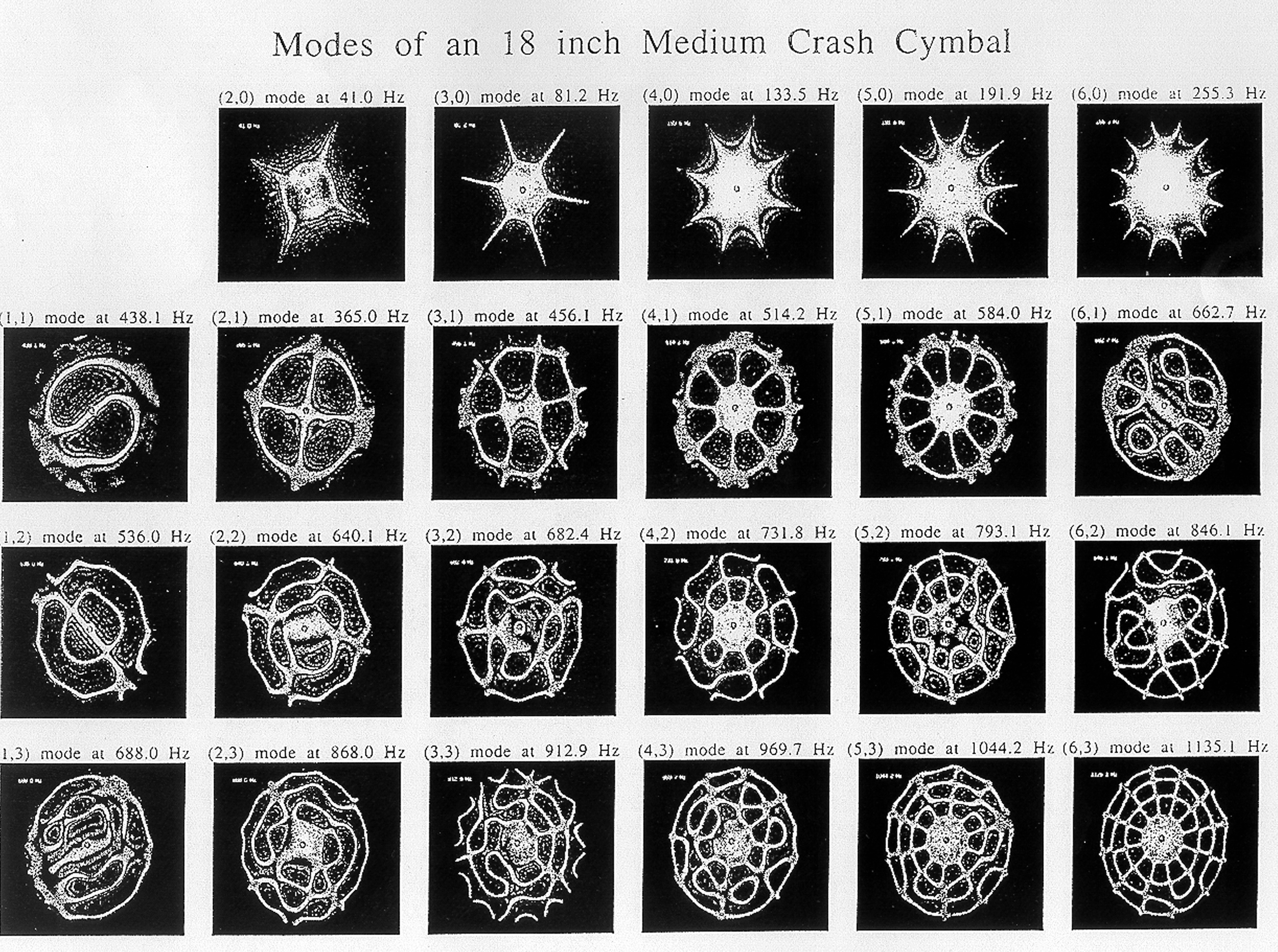Thomas D. Rossing-
Rossing@physics.niu.edu
Physics Department
Northern Illinois University
DeKalb, IL 60115
Popular version of paper 4aMUa2
Presented Thursday morning, December 7, 2000
ASA/NOISE-CON 2000 Meeting, Newport Beach, CA
Holographic interferometry provides a means for mapping the motion of vibrating objects by using holography. What results is a sort of contour map that indicates the relative motion of all locations on a vibrating surface. Holographic interferometery gives the best spatial resolution of any method of modal analysis. However, recording holograms on photographic film is time consuming and does not allow one to view the hologram continuously.
Electronic TV holography was developed partly in the aerospace industry to study vibrations. This technique uses a sensitive TV camera and a computer to create an electronic hologram pixel by pixel for display on a TV monitor. It essentially allows one to observe the holographic interferogram in real time as the driving frequency of the vibrating system is varied and results in an enormous saving in time over the photographic method.
We have applied this electronic TV holography to study the vibrational modes of several musical instruments, including violins, guitars, mandolins, bells, steelpans, cymbals, bronze drums, and gongs of various types. Understanding the way in which a musical instrument vibrates is tantamount to understanding how it produces musical sound and how it can be modified and improved.
Shown below is a series of holographic interferograms of a crash cymbal. Each one shows one mode of vibration of the cymbal with one to six nodal diameters. In each case the bright lines are nodal lines, which act as pivots as the cymbal vibrates. The modes in the top row have no nodal circles, while those in the second row each have one nodal circle, those in the third row have two, and those in the fourth row have three nodal circles. When a cymbal is struck, all of these modes are excited, as well as others, resulting in a bright musical sound.
By examining the holographic interferograms, it is possible to determine just how much each point on the vibrating surface moves and thus to determine the radiated sound field. The interferograms tell us what the sonic ingredients are, but the changing sound spectrum tells us how strongly each mode is excited during a cymbal crash. In the case of a cymbal, some modes of vibration are large initially but die away and as they do they furnish energy to other modes, so that the sound spectrum changes with time, giving the cymbal sound its characteristic "shimmer."

[ Lay Language Paper Index | Press Room ]